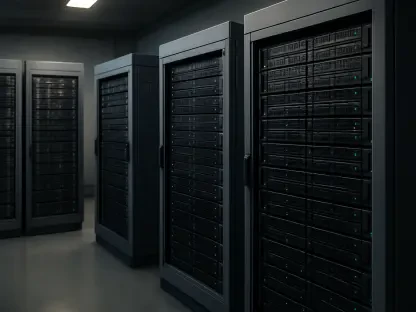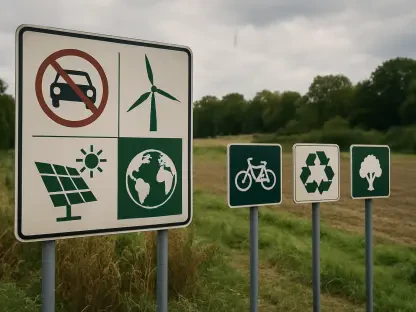In a world where millions of tons of plastic waste clog landfills and pollute oceans each year, the quest for sustainable packaging solutions has never been more urgent, especially as plastic packaging remains a cornerstone of modern commerce. This poses an environmental crisis that demands innovative and collective action. This roundup dives into diverse perspectives from industry stakeholders, policy advocates, and sustainability experts to explore whether voluntary efforts can drive a transformation in plastic packaging by 2030. By gathering insights from across the spectrum, the goal is to uncover the potential, challenges, and necessary steps for achieving a circular economy in this critical sector.
Exploring the Landscape of Voluntary Initiatives
Achievements and Optimism Among Committed Players
A significant portion of industry leaders involved in voluntary commitments, representing about 20% of the plastic packaging market, report notable strides in sustainability. Data from recent progress reports indicate that brands and retailers have dramatically increased their use of recycled content, rising significantly over a short span. This shift demonstrates a tangible impact, with some companies reducing virgin plastic reliance by over 30%, setting a benchmark for what is possible when commitment aligns with action.
Feedback from these frontrunners suggests a strong belief in the power of voluntary pledges to catalyze change. Many highlight internal innovations, such as redesigning products for recyclability and investing in alternative materials, as proof of progress. Their optimism is tempered, however, by an acknowledgment that their efforts alone cannot overhaul an industry where the majority remains disengaged.
This segment of the market often points to collaboration as a key driver, emphasizing partnerships with recyclers and producers to close the loop on plastic use. While their achievements offer a hopeful glimpse, the question lingers: can this momentum influence the broader landscape without mandatory frameworks?
Challenges and Skepticism from Broader Industry Voices
Contrasting with the progress of committed players, opinions from the remaining 80% of the market reveal a more cautious, sometimes resistant stance. Many smaller companies and non-signatories argue that the financial burden of transitioning to sustainable practices is prohibitive without external support. They cite high costs of recycled materials and inadequate infrastructure as barriers that voluntary efforts cannot surmount alone.
Industry observers note that while some consumer packaged goods companies have embraced change, others have increased virgin plastic use, driven by market demands for cost-effective solutions. This divergence underscores a critical pain point: the lack of uniform incentives or penalties to level the playing field. Critics within this group often express doubt that voluntary measures can scale effectively by 2030 without systemic intervention.
A recurring theme among these voices is the need for clearer guidance and shared responsibility. Without a unified push, they warn, the industry risks fragmented outcomes where only a minority bears the burden of change while others continue business as usual, undermining collective goals.
Policy and Systemic Solutions: A Dividing Line
Advocates for Regulatory Support and Accountability
Among policy advocates and sustainability consultants, there is a growing chorus calling for extended producer responsibility (EPR) policies to complement voluntary efforts. They argue that holding companies accountable for the lifecycle of their packaging—through funding collection systems and incentivizing recycling—could bridge the gap left by inconsistent voluntary adoption. This perspective sees regulation as a necessary catalyst to ensure broader market participation.
Insights from regional analyses reveal varied readiness for such policies, with some areas adopting EPR frameworks more swiftly than others. Proponents suggest that federal-level mandates could harmonize these efforts, creating a cohesive system where companies are motivated to innovate. They point to emerging trends, like reusable packaging trials, as evidence that policy can amplify voluntary action when strategically aligned.
The consensus here leans toward a hybrid model where voluntary commitments set the tone, but regulatory mechanisms enforce accountability. Without this balance, many fear that the ambitious targets for 2030 will remain out of reach, leaving environmental challenges unresolved.
Industry Resistance to Mandates and Push for Flexibility
On the flip side, certain industry factions express apprehension about heavy-handed regulation, favoring the flexibility of voluntary frameworks. Representatives from packaging producers and some retailers argue that mandates could stifle innovation by imposing rigid standards that fail to account for diverse operational realities. They advocate for incentives over penalties, suggesting tax breaks or grants to encourage sustainable shifts.
This group often highlights the complexity of global supply chains, noting that uniform policies might disadvantage smaller players or regions with limited infrastructure. Their stance is that voluntary efforts, supported by industry-led collaborations, allow for tailored solutions that can adapt to specific challenges, fostering gradual but sustainable change.
While acknowledging the need for progress, these voices caution against over-reliance on regulation, proposing that market-driven initiatives could achieve similar ends if paired with robust education and resource-sharing. The debate between flexibility and enforcement remains a pivotal divide in shaping the path to 2030.
Innovative Strategies and Future Directions
Emerging Trends and Collaborative Approaches
Forward-thinking companies and sustainability experts are increasingly spotlighting innovative strategies as potential game-changers. Reusable packaging systems, for instance, are gaining traction among progressive firms, with pilot programs showing promise in reducing waste. Insights gathered from these initiatives suggest that scaling such models requires cross-sector collaboration to standardize practices and build consumer trust.
Another trend gaining attention is the integration of technology in recycling processes, with some stakeholders investing in advanced sorting and material recovery systems. These advancements, while still nascent, are seen as vital to increasing the availability of high-quality recycled content, addressing a key bottleneck in the circular economy.
The excitement around these developments is tempered by calls for broader engagement, with many emphasizing that innovation must be accessible to all market players, not just the well-resourced few. Collaborative platforms and public-private partnerships are frequently cited as mechanisms to democratize access to cutting-edge solutions.
Bridging the Gap with the Wider Market
Engaging the 80% of the market outside voluntary commitments remains a daunting frontier, according to a wide array of opinions. Industry analysts suggest that tailored incentives, such as subsidies for adopting recycled materials, could motivate non-signatories to join the fold. Meanwhile, others propose global standards to create a unified benchmark that levels competitive disparities.
Differing views emerge on how to approach resistance, with some advocating for public awareness campaigns to pressure companies through consumer demand. Others believe that highlighting success stories from committed players could inspire action, showing tangible benefits like cost savings over time or enhanced brand loyalty.
A common thread across these perspectives is the urgency of action, with many warning that without inclusive strategies, the industry risks missing critical milestones by 2030. The path forward, they agree, lies in blending incentives, education, and perhaps gentle regulatory nudges to create a cohesive movement.
Reflecting on Collective Wisdom
Looking back, the roundup of opinions and strategies revealed a landscape of both promise and persistent hurdles in transforming plastic packaging through voluntary efforts. The dialogue between industry leaders, policy advocates, and broader market players painted a picture of significant progress among committed entities, juxtaposed against widespread inertia elsewhere. The debate over regulation versus flexibility, alongside the push for innovation, underscored the complexity of achieving a circular economy.
Moving forward, actionable steps emerged as critical considerations. Advocating for extended producer responsibility policies could provide the necessary backbone to voluntary efforts, while fostering collaborations across sectors might unlock scalable solutions. Investing in recycling infrastructure stands out as a priority to support market-wide shifts. For those eager to delve deeper, exploring case studies of successful sustainability transitions or regional policy frameworks offers valuable next steps to build on this foundation.









